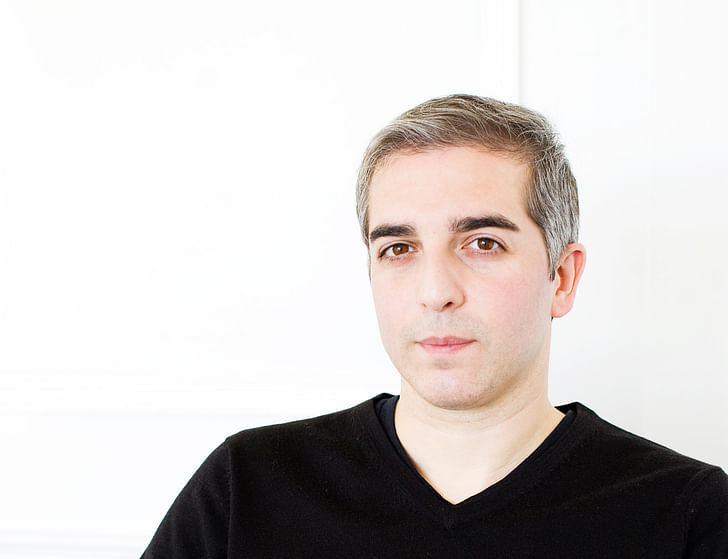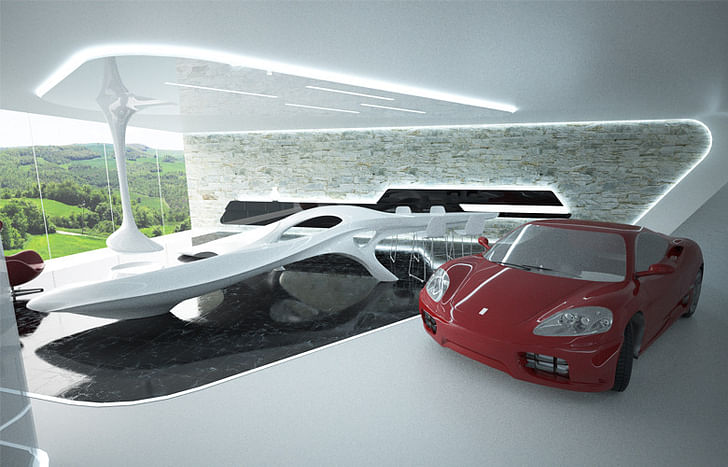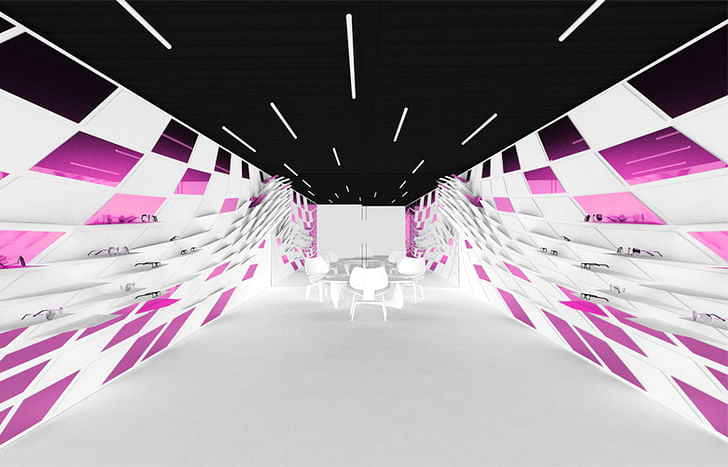

"Touching Base" is a series of mini-interviews meant to expose, promote and occasionally burn highly talented people in architecture, who are working outside of the mainstream's limelight.
Volkan Alkanoglu is the founding principal of Volkan Alkanoglu | DESIGN LLC, located in Atlanta, Georgia. Alkanoglu was raised and educated among international influences – born in Turkey and raised in Germany, he studied architecture at the Hochschule der Künste in Berlin and the Peter Behrens School of Architecture in Düsseldorf. He later received his Master of Architectural Design degree with Distinction from the Bartlett School of Architecture in London.
His firm offers a variety of design and architecture services, from furniture and buildings to master planning and public art.

Orhan Ayyüce: What are you currently working on?
Volkan Alkanoglu: One of the questions I ask before we start any project is: Who is the audience?
Each of our projects, which comprise of commissions, proposals, competitions, or design research, has a different audience and hence different motives. The projects intend to start a conversation and discussion with their appropriate constituencies while maintaining a polemic towards disciplinary design questions. Each project produces its own characteristics and intentions.


With this in mind, I am currently working on a variety of projects ranging from single family housing and furniture pieces to installations and pavilions. We just completed a Police Memorial in Washington D.C. for the Washington Metropolitan Transit Authority and a light weight monocoque structure suspended inside an atrium in Atlanta. Other works in progress this summer are pavilions and sculptures to be located in Los Angeles and Denver.
installation projects provide my office with an opportunity to further develop efficient fabrication techniques and innovative structural solutionsThe installation projects provide my office with an opportunity to further develop efficient fabrication techniques and innovative structural solutions which we can apply to the construction of larger projects, particularly facade systems. I consider some of these projects to be similar to a concept car which are one-off designs, but some of its features or details can be translated into broader solutions.
What is also exciting about these smaller projects is that most of the work is exhibited in the public realm and receives immediate feedback on functionality, perception and other measures.
Lastly, our applied design research focuses on the single family house combining ideas about domesticity and the electric automobile.

Can you talk about your concepts for residential design?
While I was teaching at SCI-Arc in 2012, Jeff Kipnis stated during one of his lectures that “If we solve the problem of the garage door, we will solve suburbia.” At the same time, I was running a graduate studio titled “The Car, the Courtyard and the House.” This led me to start thinking about relationships between house and car more in some of my own design work.
If we imagine the “Futures” of our dwellings, we need to search for new allies, territories, objects and technologies which we have dismissed, abandoned or never fully embraced thus far. It is important to question the current programmatic elements of the singular house, understand new social structures, discover spatial alliances, re-read materials and understand advances in technologies.
If we imagine the “Futures” of our dwellings, we need to search for new allies, territories, objects and technologies which we have dismissed
A visual fixture within the typical single family house, the garage has always been an eyesore, or an architectural misfit to any comprehensive layout and parti. Stuck on the side, hidden behind brick veneers, or disguised as an extension of the housing mass, the garage is the problematic program for residential dwellings.
On the other hand, the garage when utilized as a multi-purpose room has become a space for invention where start-up companies like Apple or bands such as Nirvana were born. Historically, the garage takes on the role of a love-hate relationship; we do not want to live without it, however as designers, we do not fully embrace it either.

Part of the reason for rejecting the garage has to do with the car itself, or rather the technologies of the car. The automobile with all its sounds and exhaust is considered loud, smelly and dirty—parameters we reject in our homes and living environments. Yet, the car also showcases social status which is often expressed in the desire to have immediate adjacencies between the owner, car, and house.
With new developments in the automobile industry pushing technologies towards hybrid and fully electric vehicles, we have now the unique opportunity again to rethink the prior troubled relationships between the house and the automobile.
Some of my work begins to speculate on these scenarios by introducing a critical look at new knowledge found in the automobile industry and future architectures.

Where do you get your architectural ideas?
I gain my inspiration from concepts informed by cultural, technological and social dimensions and the belief that a public design project in its contemporary manifestation can create meaningful experiences to a large and diverse audience.
we have now the unique opportunity again to rethink the prior troubled relationships between the house and the automobile.I was educated in Düsseldorf with a strong emphasis on modernism and later went on to study in London with Peter Cook at the Bartlett where I designed a series of robots for the city. You probably cannot find two more dissimilar education models, but it was extremely beneficial for me at that time. I continued to work for many years at Foster and Partners, Future Systems and Asymptote Architecture on several high performance building projects and cultural institutions with an emphasis on high design.
I founded my own practice, Volkan Alkanoglu Design in 2009 and taught at SCI-Arc for several years. Teaching and working alongside many talented faculty members at SCI-Arc was a tremendous experience and essential in developing my ideas about contemporary architecture. It was a critical moment in my own practice to have the exposure to these colleagues (all who had strong, original voices in architecture) in order to carve out my own design agenda. I am also influenced by conversations with many talented peers and friends such as Lassa Architects (London and Brussels), Jennifer Bonner (Atlanta), Alvin Huang (Los Angeles), James Michael Tate (Ann Arbor) and many others.
A long-time contributor to Archinect as a senior editor and writing about architecture, urbanism, people, politics, arts, and culture. The featured articles, interviews, news posts, activism, and provocations are published here and on other websites and media. A licensed architect in ...
2 Comments
Looks like Zaha.
My goodness it's a small world! My husband's company Indianapolis Fabrications made and installed Volkan's piece Memorial:
In fact I did some shop drawing work on it! Very cool.
Block this user
Are you sure you want to block this user and hide all related comments throughout the site?
Archinect
This is your first comment on Archinect. Your comment will be visible once approved.